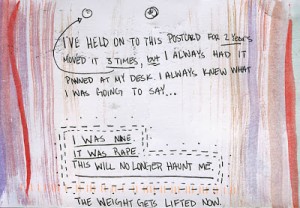“Defend Our Climate” and Indigenous Life Narratives
On Saturday November 16th I had the pleasure to go to one of 130 rallies occurring across Canada, from coast-to-coast-to-coast, against tar sands expansion, pipeline development, and “run away climate change.”
At 2 pm I boarded a bus, by myself, from UBC and headed to Science World. I’ve been to a few climate change activities in the past year and the experience of going to PowerShift 2012 in Ottawa deeply affected me and changed my outlook in life. It was one of the reasons I got into UBC as I wrote about my experience of going somewhere by myself with friends to learn about activism and how intersecting the climate change issue is. I came out of the experience with a newfound network in climate alliance and a new outlook in life.
At PowerShift I heard a woman by the name of Crystal Lameman speak on her experience as a member of the Beaver Lake Cree Nation who’s lands are directly downstream and on tar sands development. She spoke on the increased amours of rare cancers appearing throughout the community and the loss of a way of life. She spoke on how the people on her reserve do not have antiquate living standards. There is no access to clean water. However, just across the invisible border that separates “indians from non-indians” a farmer has access to clean, safe drinking water and doesn’t have to worry that he is poisoning his children by keeping them in their home.
And we thought indigenous suffering ended with residential schools.
The city of Vancouver declared “June 21, 2013 to June 20, 2014 as a Year of Reconciliation in Vancouver.” And now four months later my hometown of Toronto has decreed that November 12, 2013 to November 12, 2014 will be the year of reconciliation in Toronto. In Vanocuver we’ve seen the TRC come and go. We’ve heard the voices of past events, but what abut the present and the future? Colonialism did not end with the residential school system and still occurs in Indigenous territories across Canada where we have pipelines, mines, fracking operations, and chemical plants in communities where the people see little to no economic value. What is the point in reconciliation when children and elderly people living in the tar sands region have ten times the risk of developing life threatening cancers?
As a Torontonian I’m more familiar with the Line 9 proposal which seeks to transport crude oil from the oil sands through the poorest and most impoverished neighbourhoods in Toronto. So, coming to the Defend Our Climate Rally was eye opening because the same thing is happening here with the Enbridge Northern Gateway Pipeline. You may have seen an add for that as they have released a multi million dollar campaign to change public opinion in BC. I heard from Indigenous leaders from the interior (side note: I’m learning BC lingo) and the coast who have come in solidarity to oppose the pipeline as most of it runs through their unceded ancestral territory.
As I learned. first nation’s are the last line of defence for the environmental movement, because the minimal laws we had have been gutted with the passing of two omnibus bills. The latest one, Bill C-45, was the one that sparked IdleNoMore. However, Native Canadians have rights that are guaranteed in the constitution that gives them rights to their land and their way of life. And because of this collaboration between the environmental movement and indigenous peoples there has been a proliferation of oral life narratives. Every single climate event that I have gone to within the past year has featured a opening ceremony by the nation of the area followed by the stories of how the issue is affecting them. There are usually sage smudges, music and dancing. Never before have Native Stories come to the forefront of Canadian minds with the IdleNoMore protest and the story of Chief Theresa Spence and her hunger strike, and now this with the first line of a Global News article reading “First Nations and environmental groups hopes came true when thousands of people gathered to attend a ‘No Enbridge’ rally this afternoon.”



